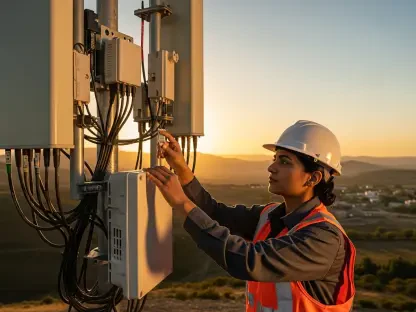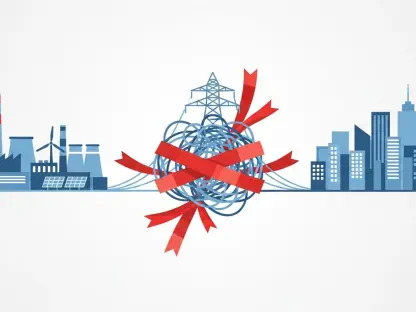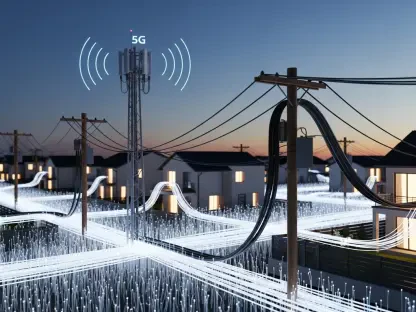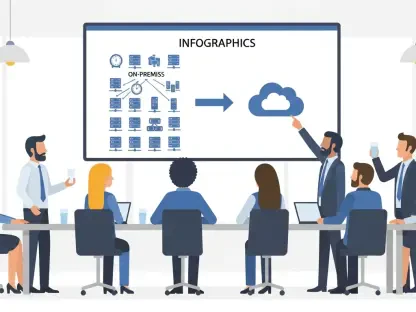In the vast, rugged landscapes of Montana, where rural communities often grapple with isolation from modern amenities, access to high-speed internet remains a critical challenge that hinders economic growth, education, and social connectivity. With many residents still unable to tap into the digital world, the state has embarked on an ambitious journey to close this gap through a substantial $300 million allocation approved by the Communications Advisory Commission. This funding, largely drawn from the federal Broadband Equity, Access, and Deployment (BEAD) program, targets connectivity for an additional 71,975 locations, known as Broadband Serviceable Locations (BSLs). The initiative stands as a beacon of hope for underserved areas, promising to transform lives by bringing reliable internet to remote corners of the state. This effort not only addresses immediate needs but also sets a precedent for how rural regions can leverage federal support and innovative strategies to overcome longstanding infrastructure barriers.
Tackling Rural Connectivity Challenges
Montana’s broadband expansion is driven by a pressing need to connect rural areas that have long been left behind in the digital age. The $300 million investment is a significant step toward ensuring that nearly 72,000 new locations gain access to high-speed internet, a lifeline for education, telemedicine, and remote work opportunities. A key aspect of this initiative is the urgency with which it has been executed, prompted by revised federal guidelines that necessitated a swift 90-day application and review process. Despite initial skepticism from committee leaders like Rep. Ed Buttrey about meeting such a tight deadline, the commission managed to evaluate and approve 32 grant applications with remarkable efficiency. This rapid response highlights the state’s determination to prioritize connectivity as a fundamental right, ensuring that even the most isolated communities are not overlooked in the push for technological equity. The pending final approval from Governor Greg Gianforte further underscores the collaborative effort behind this monumental task.
Beyond the logistical feats, the financial framework supporting this initiative reveals a robust commitment to broadband infrastructure. Montana has secured $557 million from the BEAD program, supplemented by $148 million in matching funds from participating companies. This substantial backing enables a comprehensive approach to connectivity, addressing not just residential needs but also Community Anchor Institutions like libraries, which serve as vital public access points. However, challenges persist, as some providers have faced difficulties in completing past projects due to overextension. Despite these hurdles, the commission has strategically allocated funds to balance risk with progress, ensuring that both established and struggling companies contribute to the overarching goal. This pragmatic stance reflects an understanding that bridging the digital divide requires patience and adaptability, especially in a state with such diverse geographic and demographic needs.
Balancing Technology and Scalability
A defining feature of Montana’s broadband strategy is the emphasis on outcomes over specific technologies, a shift influenced by updated federal rules prioritizing speed and scalability. This flexibility has led to a diverse allocation of the $300 million, with both fiber optic and satellite internet providers playing pivotal roles in the expansion. Traditional fiber optic companies, such as Blackfoot Communications and Charter Spectrum, have each received around $26 million to connect significant numbers of locations, ensuring robust, high-quality service where feasible. Yet, the inclusion of satellite technology marks a strategic pivot to address the unique challenges of remote areas, where laying fiber is often impractical. This hybrid approach demonstrates a forward-thinking mindset, recognizing that a one-size-fits-all solution cannot effectively serve a state as vast and varied as Montana, where terrain often dictates technological possibilities.
Delving deeper into the funding distribution, satellite internet providers like Amazon and Starlink have emerged as critical players in this initiative. Approximately 16% of the allocated funds support non-geostationary satellite services, which will cover about 65% of the new BSLs, a testament to the technology’s ability to deliver rapid, widespread coverage. Amazon alone is set to receive $16 million to connect around 40,000 locations, while Starlink could secure up to $33 million for its contributions. This significant investment in satellite solutions highlights a growing reliance on innovative technologies to reach the most isolated communities quickly. While fiber optic remains the gold standard for reliability, the integration of satellite services ensures that speed and accessibility are not sacrificed for those in the farthest reaches of the state. Such a balanced approach signals a nuanced understanding of how to maximize impact with limited resources in a challenging environment.
Reflecting on a Path Forward
Looking back, Montana’s bold $300 million investment marked a turning point in the state’s fight against the digital divide, successfully connecting over 71,000 new locations with a blend of fiber optic and satellite technologies. The involvement of major players like Amazon and Starlink, alongside traditional providers, showcased a hybrid model that prioritized both reach and reliability. Despite hurdles with some companies’ past performance, the strategic allocation of funds and adherence to federal guidelines demonstrated a commitment to progress. Moving forward, sustained oversight will be essential to ensure that providers deliver on their promises, while continued investment in infrastructure can build on this foundation. Exploring additional partnerships and innovative funding mechanisms could further accelerate connectivity gains. Ultimately, Montana’s efforts offer a blueprint for other rural states, proving that with determination and adaptability, even the most daunting digital gaps can be bridged effectively.









